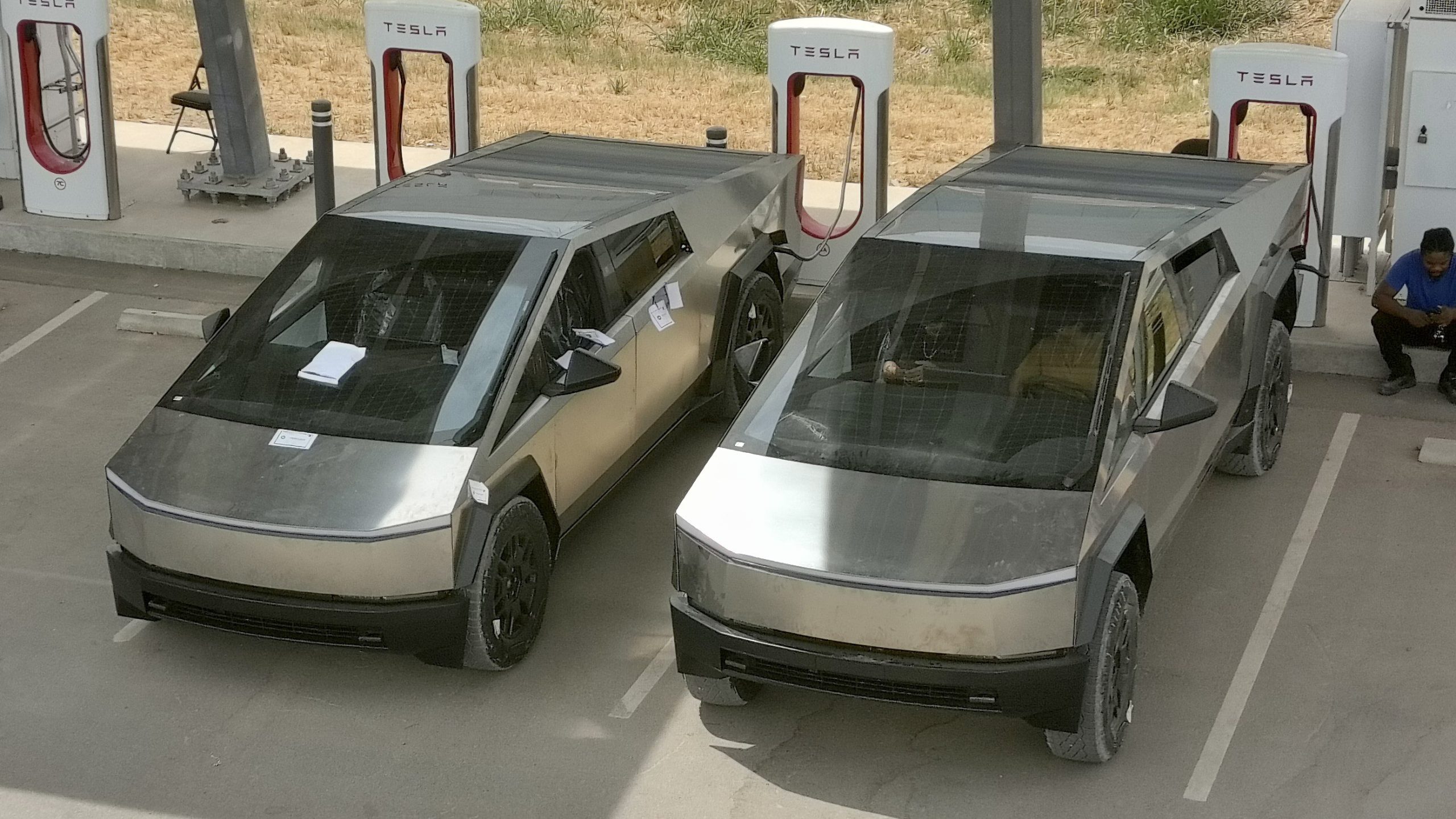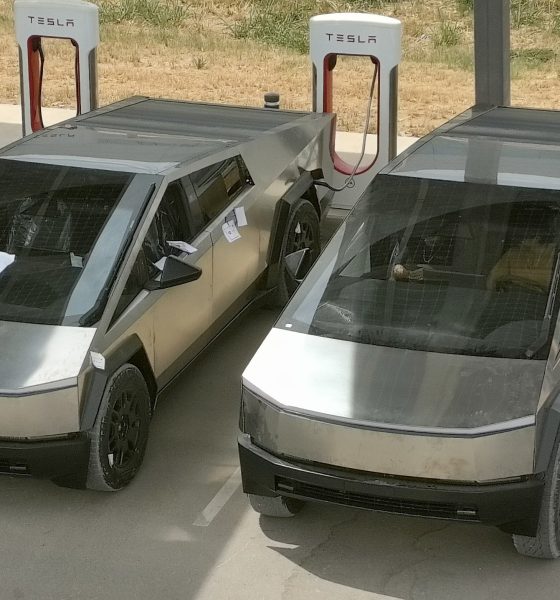There’s no doubt that the forthcoming Tesla Cybertruck has generated some talk in the electric vehicle (EV) community, but it has also garnered a massive number of reservations. According to one user-managed tally, the Cybertruck has topped two million reservations ahead of its official launch.
The Tesla Cybertruck appears to have surpassed two million customer reservations, according to a community-run Google Sheets reservation tracker created after the truck’s unveiling in 2019 (via electrek). At the time of writing, the sheet shows that 47,326 of the reservations were self-reported, and those entries can be seen under the page’s “Cybertruck” and “Other Reservations” tabs.
The data is based on a combination of self-reported reservations, the block of reservation numbers used and some of Tesla CEO Elon Musk’s own statements, according to the sheet’s “Q&A” tab. Based on the number of reservations, the sheet also estimates a potential revenue of $152.13 billion and as much as $201 million in deposits alone.
Tesla Cybertruck’s early reservation holders will get Full Self-Driving for a steal
Out of the Cybertruck’s single-motor, dual-motor, tri-motor and quad-motor trims, the dual-motor is the most popular, with the tri-motor trailing behind as the second most popular. The single- and quad-motor trims both have significantly fewer reservations, accounting for just 8.12 and 8.65 percent of them, respectively.
In addition to trim percentages, the Google Sheet also includes data on reservation holders who added Full Self-Driving (FSD) to their Cybertruck purchase, representing just over 67 percent of the reservations.
You can see the full breakdown of trim categories and FSD add-ons at the time of writing below, straight from the Cybertruck reservation tracker.
| Trim | Trim Reservations | Percent Trim^ | Trim | FSD Reservation | Percent FSD |
| Single-Motor | 3532 | 8.12% | Single-Motor | 1691 | 47.88% |
| Dual-Motor | 21652 | 44.06% | Dual-Motor | 12808 | 59.15% |
| Tri-Motor | 20050 | 39.17% | Tri-Motor | 15868 | 79.14% |
| Quad Motor (started 12/4/21) | 1560 | 8.65% | Quad Motor (started 12/4/21) | 1075 | 68.91% |
| Any | 46794 | Any | 31442 | 67.19% |
^Percentages based on scaling Quad-Motor reservations
The Cybertruck reservation tracker reached a million units in 2021, and as many as 1.9 million units by July of this year. Musk has continually touted the Cybertruck’s strong demand, which he said earlier this year was “so off the hook, you can’t even see the hook.”
It’s worth noting that reservation holders can back out of their reservations at any time, and all that’s required to reserve a Cybertruck is a $100 refundable deposit. However, even if many reservation holders back out of purchasing the truck, the number of buyers would likely still be massive based on these figures.
As Tesla is still in pre-production for the Cybertruck, high demand will also equate to long wait times (not to mention that the vehicle was initially expected to begin deliveries in 2021). Still, this shows that many eagerly await the unique electric pickup, and recent pre-production Cybertruck sightings in the wild suggest that initial deliveries could be just around the corner.
What are your thoughts? Let me know at zach@teslarati.com, find me on X at @zacharyvisconti, or send your tips to us at tips@teslarati.com.

News
Tesla FSD fleet is nearing 7 billion total miles, including 2.5 billion city miles
As can be seen on Tesla’s official FSD webpage, vehicles equipped with the system have now navigated over 6.99 billion miles.

Tesla’s Full Self-Driving (Supervised) fleet is closing in on almost 7 billion total miles driven, as per data posted by the company on its official FSD webpage.
These figures hint at the massive scale of data fueling Tesla’s rapid FSD improvements, which have been quite notable as of late.
FSD mileage milestones
As can be seen on Tesla’s official FSD webpage, vehicles equipped with the system have now navigated over 6.99 billion miles. Tesla owner and avid FSD tester Whole Mars Catalog also shared a screenshot indicating that from the nearly 7 billion miles traveled by the FSD fleet, more than 2.5 billion miles were driven inside cities.
City miles are particularly valuable for complex urban scenarios like unprotected turns, pedestrian interactions, and traffic lights. This is also the difference-maker for FSD, as only complex solutions, such as Waymo’s self-driving taxis, operate similarly on inner-city streets. And even then, incidents such as the San Francisco blackouts have proven challenging for sensor-rich vehicles like Waymos.
Tesla’s data edge
Tesla has a number of advantages in the autonomous vehicle sector, one of which is the size of its fleet and the number of vehicles training FSD on real-world roads. Tesla’s nearly 7 billion FSD miles then allow the company to roll out updates that make its vehicles behave like they are being driven by experienced drivers, even if they are operating on their own.
So notable are Tesla’s improvements to FSD that NVIDIA Director of Robotics Jim Fan, after experiencing FSD v14, noted that the system is the first AI that passes what he described as a “Physical Turing Test.”
“Despite knowing exactly how robot learning works, I still find it magical watching the steering wheel turn by itself. First it feels surreal, next it becomes routine. Then, like the smartphone, taking it away actively hurts. This is how humanity gets rewired and glued to god-like technologies,” Fan wrote in a post on X.
News
Tesla starts showing how FSD will change lives in Europe
Local officials tested the system on narrow country roads and were impressed by FSD’s smooth, human-like driving, with some calling the service a game-changer for everyday life in areas that are far from urban centers.

Tesla has launched Europe’s first public shuttle service using Full Self-Driving (Supervised) in the rural Eifelkreis Bitburg-Prüm region of Germany, demonstrating how the technology can restore independence and mobility for people who struggle with limited transport options.
Local officials tested the system on narrow country roads and were impressed by FSD’s smooth, human-like driving, with some calling the service a game-changer for everyday life in areas that are far from urban centers.
Officials see real impact on rural residents
Arzfeld Mayor Johannes Kuhl and District Administrator Andreas Kruppert personally tested the Tesla shuttle service. This allowed them to see just how well FSD navigated winding lanes and rural roads confidently. Kruppert said, “Autonomous driving sounds like science fiction to many, but we simply see here that it works totally well in rural regions too.” Kuhl, for his part, also noted that FSD “feels like a very experienced driver.”
The pilot complements the area’s “Citizen Bus” program, which provides on-demand rides for elderly residents who can no longer drive themselves. Tesla Europe shared a video of a demonstration of the service, highlighting how FSD gives people their freedom back, even in places where public transport is not as prevalent.
What the Ministry for Economic Affairs and Transport says
Rhineland-Palatinate’s Minister Daniela Schmitt supported the project, praising the collaboration that made this “first of its kind in Europe” possible. As per the ministry, the rural rollout for the service shows FSD’s potential beyond major cities, and it delivers tangible benefits like grocery runs, doctor visits, and social connections for isolated residents.
“Reliable and flexible mobility is especially vital in rural areas. With the launch of a shuttle service using self-driving vehicles (FSD supervised) by Tesla in the Eifelkreis Bitburg-Prüm, an innovative pilot project is now getting underway that complements local community bus services. It is the first project of its kind in Europe.
“The result is a real gain for rural mobility: greater accessibility, more flexibility and tangible benefits for everyday life. A strong signal for innovation, cooperation and future-oriented mobility beyond urban centers,” the ministry wrote in a LinkedIn post.
News
Tesla China quietly posts Robotaxi-related job listing
Tesla China is currently seeking a Low Voltage Electrical Engineer to work on circuit board design for the company’s autonomous vehicles.

Tesla has posted a new job listing in Shanghai explicitly tied to its Robotaxi program, fueling speculation that the company is preparing to launch its dedicated autonomous ride-hailing service in China.
As noted in the listing, Tesla China is currently seeking a Low Voltage Electrical Engineer to work on circuit board design for the company’s autonomous vehicles.
Robotaxi-specific role
The listing, which was shared on social media platform X by industry watcher @tslaming, suggested that Tesla China is looking to fill the role urgently. The job listing itself specifically mentions that the person hired for the role will be working on the Low Voltage Hardware team, which would design the circuit boards that would serve as the nervous system of the Robotaxi.
Key tasks for the role, as indicated in the job listing, include collaboration with PCB layout, firmware, mechanical, program management, and validation teams, among other responsibilities. The role is based in Shanghai.
China Robotaxi launch
China represents a massive potential market for robotaxis, with its dense urban centers and supportive policies in select cities. Tesla has limited permission to roll out FSD in the country, though despite this, its vehicles have been hailed as among the best in the market when it comes to autonomous features. So far, at least, it appears that China supports Tesla’s FSD and Robotaxi rollout.
This was hinted at in November, when Tesla brought the Cybercab to the 8th China International Import Expo (CIIE) in Shanghai, marking the first time that the autonomous two-seater was brought to the Asia-Pacific region. The vehicle, despite not having a release date in China, received a significant amount of interest among the event’s attendees.










